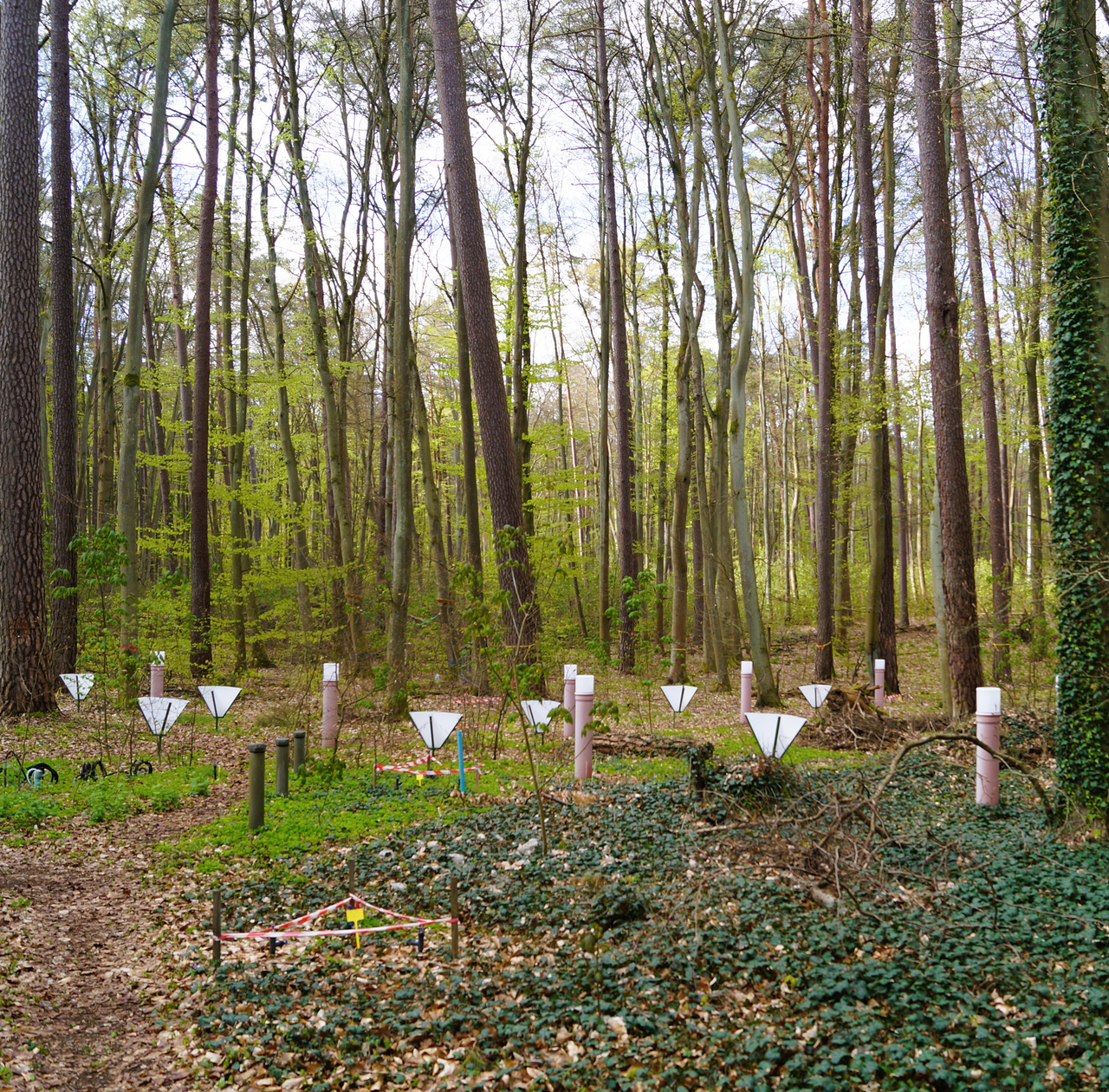Project
Monitoring Program Neuglobsow

Continuation of the Integrated Monitoring Program at the Neuglobsow Station (Brandenburg)
Background and Objective
The "Integrated Monitoring" (ICP-IM) is an international cooperative program under the Geneva Air Quality Convention that examines the effects of long-range transported air pollutants on ecosystems across multiple locations in Europe. The program aims to observe the condition of ecosystems and to detect changes in community composition and nutrient cycles early on. It also investigates the impacts of air pollutants, including their interaction with climate change, and develops simulation models to forecast future ecosystem developments. By analyzing data and models, suggestions for an effect-based national air quality policy can be derived. In Germany, the “Integrated Monitoring” is coordinated by the federal-state working group "Umweltmonitoring Wald" (more on this at https://blumwald.thuenen.de/icp-im-1). In Germany, there are two Integrated Monitoring sites: the Forellenbach area in the Bavarian Forest National Park and the lowland monitoring site Neuglobsow-Stechlinsee. Since June 2023, the Thünen Institute has been coordinating measurements at the Neuglobsow site in Brandenburg, which have been ongoing since 1998. This site is characterized by a mixed forest of pine and beech and is classified as a clean air location, with its catchment area including the oligotrophic Stechlinsee lake.
Approach
The integrated monitoring of ecosystems involves simultaneous long-term measurements of physical, chemical, and biological parameters across various ecosystem compartments at the same site. As part of this monitoring framework, measurements and sampling are conducted through subprograms that focus particularly on the soil, plant, and water compartments.
These subprograms are structured as follows:
Needle and leaf analysis: This analysis evaluates the current nutritional status of the tree population (beech and pine). Sampling and chemical analysis are conducted annually separately for needle and broadleaf trees.
Litterfall: Litterfall plays a crucial role in understanding internal nutrient fluxes of macro and micronutrients in their seasonal and long-term dynamics. Litterfall samples are collected and sorted monthly by fractions (beech leaves, pine needles, pine fruits, beech fruits, wood and bark, needles and leaves of other species, other biomass). The chemical composition of each sub-sample is analyzed. In addition to the total mass of each fraction, the specific mass of 100 leaves or 1000 needles, along with their respective surface area, is documented.
Xylem flow: Xylem flow measurements derive water flow through the stem on a daily and seasonal basis, calculating the transpired water volume of the entire tree crown. High-resolution dendrometers allow for determining the water saturation level of the stem. The measurements are taken monthly.
Vegetation surveys: These surveys aim to characterize the vegetation and classify it into other forest ecosystems. They encompass all species of herbaceous, moss, shrub, and tree layers, capturing the floristic diversity as an important part of existing biodiversity.
Tree bioelements: Methods for measuring forest biomass and carbon storage are being tested using the stand assessment techniques of the NFSI (National Forest Soil Inventory). This includes also natural regeneration and deadwood.
Soil chemistry: Soil chemistry measurements are crucial for assessing site acidification and eutrophication (S and N deposition), as well as carbon reserves. Sampling occurs every five years at different depth layers.
Trace gas emissions analysis: Released CO2 emissions are measured using six semi-automatic chamber systems. Measurements are conducted bi-weekly during the growing season. Since soil degassing depends mainly on soil moisture and temperature, these parameters are also recorded. Data on ecosystem respiration and gross primary production enable conclusions to be drawn regarding the forest's carbon balance.
Microbial decomposition: Microbial activity influences nutrient mineralization in ecosystems. Leaf litter is placed in mesh bags on the soil surface, and the mass difference is determined annually (up to three years) from the application period.
Throughfall and stemflow: Precipitation accumulates through stem flow and throughfall, playing a vital role in substance turnover and transfer. Analyzing precipitation amount, ion concentration, pH, and conductivity for throughfall allows for the calculation of the canopy balance, which gives the substance budget of a stand (including Na+, K+, Mg2+, Ca2+, NH4+, PO43- and Cl-).
Field precipitation: Precipitation measurements are essential for understanding the water balance and are evaluated in combination with throughfall and stem flow. Analysis of ion concentration, pH, and conductivity allows for conclusions regarding substance balance.
Soil solution chemistry: The soil is an important system level for studying substance balances, regulatory, and adaptation mechanisms. Soil solution chemistry samples are taken monthly at six different depths. Electrical conductivity, pH, and ion concentrations are measured.
Groundwater chemistry: Groundwater samples are taken at least six times a year from various depth wells. Groundwater data include ion concentrations, pH, conductivity, and the groundwater level from various depths and points.
A monitoring manual describes all survey and analysis methods, enabling uniform investigations to be conducted across all sites.
Results
DOI: 10.3220/PB1732614904000
Involved Thünen-Partners
Involved external Thünen-Partners
- Umweltbundesamt (UBA)
(Dessau-Roßlau, Deutschland)
Funding Body
-
Umweltbundesamt (UBA)
(national, öffentlich)
Duration
6.2023 - 6.2025
More Information
Project status:
finished

![[Translate to English:] [Translate to English:]](/media/_processed_/9/2/csm_Allgemein_Thueringen_Hainich_Mischwald_Bolte_2__19d9dab56a.jpg)
![[Translate to English:] [Translate to English:]](/media/_processed_/d/2/csm_100_0001_0013_c05c63e7db.jpg)





